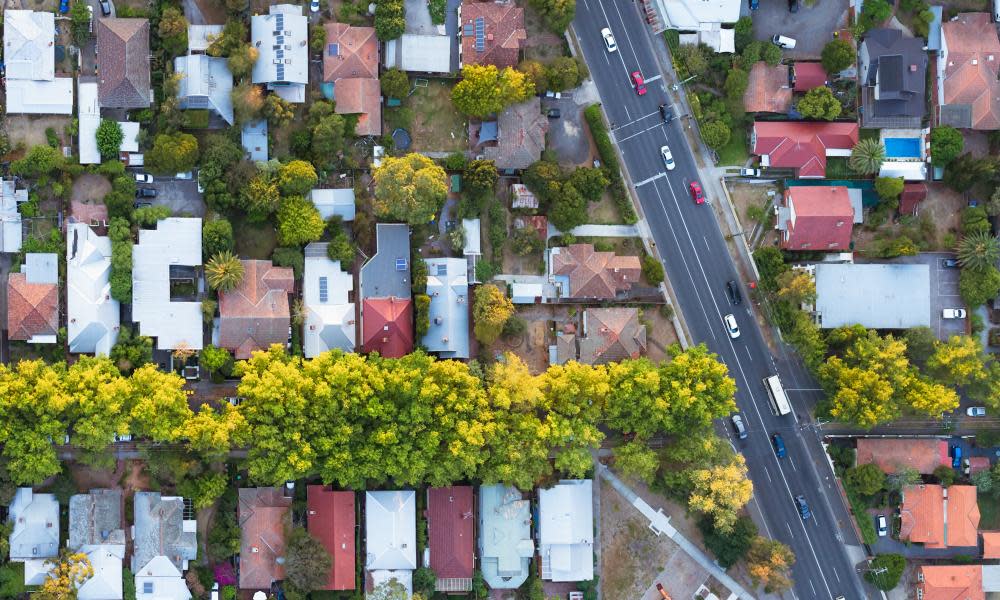Rent virtually unaffordable for those on low incomes or welfare, survey finds

‘devastatingly inadequate’. Photograph: George Clerk/Getty Images
Australia’s rental market is virtually unaffordable for those on low incomes or government welfare, according to a detailed new study.
In a survey of 67,000 properties by Anglicare Australia, less than 2% were affordable for single households receiving government welfare and only 2.83% were affordable for someone on minimum wage even without government payments. Single people on a disability pension could afford only 0.87% of rental properties nationwide.
The findings also suggest rental affordability is not solely a major-city issue. Of 13,739 regional properties surveyed, only five were affordable for a single person on youth allowance.
Nationwide, a single parent on Newstart with one child over eight could afford to rent only 0.35% of properties. Out of 54,000 metropolitan properties, they could only afford four.
For a single person over 18 on youth allowance, only eight properties in Australia were affordable, even with the definition expanded to include share houses.
The report’s authors say low government support payments and soaring rents are creating a “poverty trap” and are calling on the government to take action in the upcoming May budget.
Single-parent payments under Newstart were singled out for being “devastatingly inadequate”. Under rules introduced in 2013, single parents are moved from the higher single parenting payment to a lower rate on Newstart once their child turns eight.
Veronica Suarez, a single mother of eight renting in Sydney’s western suburbs, told the Guardian half of her income went towards rent, even with a disability carer’s payment.
“I have two children with cerebral palsy, one with ADHD and one with speech delay and I’m paying $580 a week in rent”, she said. “For me, it’s a struggle. I work part-time and rent is the first thing I pay.
“If I wanted to go to a housing commission I could but there would be a long waiting list. I think the government should do something to improve child support. That’s a big thing for me. The rent assistance I receive is only $180 a fortnight and that’s not enough.”
The report, which collated rental information on the weekend of 1 April, defined an affordable rental as one that took up less than a third of a household’s income.
Anglicare’s executive director, Kasy Chambers, said the upcoming budget was the government’s chance to fix the situation.
“For eight years, Anglicare Australia’s rental affordability snapshot has highlighted the experiences of people on the lowest incomes in the rental market,” she said. “What we’ve learned is that it’s getting tougher.
“The budget must include investment in public housing, more support for community housing options and a commitment to winding back capital gains tax and negative gearing concessions. We also need to see income support payments go up as a matter of urgency. Housing affordability is not a problem that can simply be left to the market.”
Nationwide, the survey found single pensioners could afford to rent 1.62% of properties and those on a disability pension were priced out completely in Sydney, Brisbane and Darwin.
In regional areas, a single parent with a child over eight could afford 1.7% of properties, a single person on a disability pension could access 3.49% and an aged pensioner could access 5%.
Out of all low-income households analysed, a couple with two children, working at minimum wage, and with family tax benefit A came off best, being able to afford 27.56% of properties.

 Yahoo News
Yahoo News 
